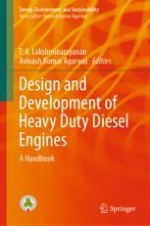2020 | OriginalPaper | Chapter
6. Strategies to Control Emissions from Off-Road Diesel Engines
Author : M. V. Ganesh Prasad
Published in: Design and Development of Heavy Duty Diesel Engines
Publisher: Springer Singapore
Activate our intelligent search to find suitable subject content or patents.
Select sections of text to find matching patents with Artificial Intelligence. powered by
Select sections of text to find additional relevant content using AI-assisted search. powered by
